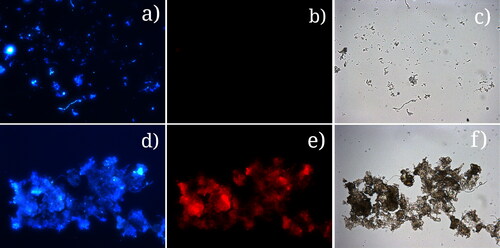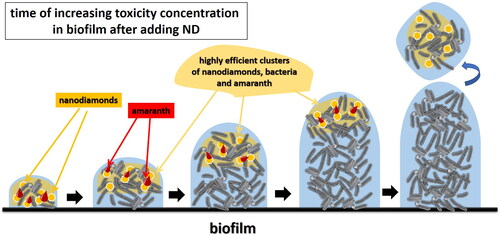Figures & data
Figure 2. Main biochemical steps in amaranth biodegradation (AzoR – azoreductase; C12DO – catechol-1,2-dioxygenase, C23DO – catechol-2,3-dioxygenase). The scheme illustrates the first stage of decolorization (catalyzed by AzoR) and the second stage in which the detoxification is performed. The key biochemical step in it is the decyclization of the intermediate metabolites by the ortho-cleavage (catalyzed by C12DO) or meta-cleavage (catalyzed by C23DO).
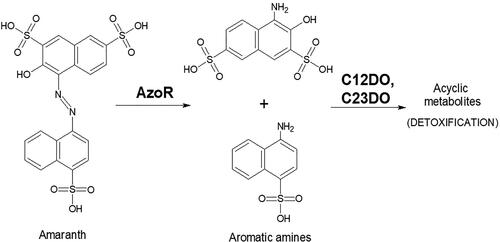
Figure 3. Efficiency of amaranth removal during the azo-degradation process. The ND (ND) application at 269 h is shown in red.

Figure 4. Key microbial groups in the biofilter before (191 h) and after (455) ND addition (AeH – aerobic heterotrophs; AnH – anaerobic heterotrophs; Pseud. sp. – Pseudomonas sp.; AzoDegr – azo-degrading bacteria).
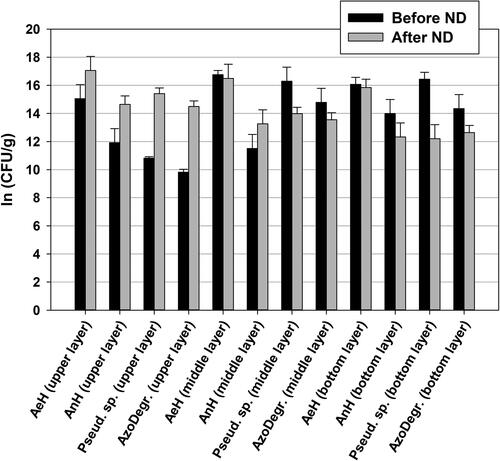
Figure 5. SEM image of the sand biofilter at 455 h: biofilm (a); quarz sand particle (b). Scanning electron microscope JSM-5510 (JEOL, Japan).
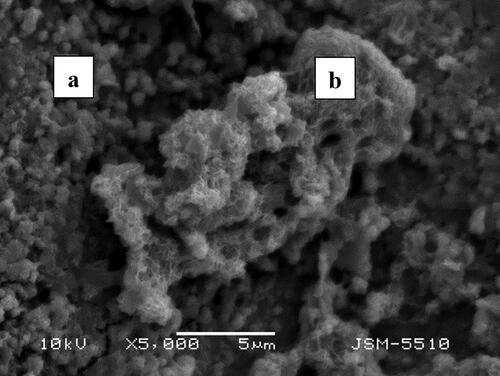
Figure 6. Activities of the key enzymes from the biodegradation pathway of amaranth before (121 h) and after ND addition (455 h): azoreductase activity (a); succinate dehydrogenase activity (b); catechol-1,2-dioxygenase activity (c); catechol-2,3-dioxygenase activity (d).
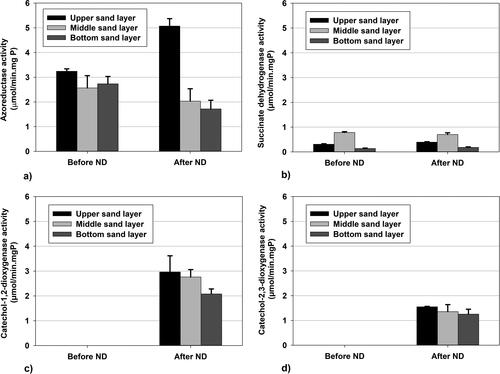
Figure 7. Fluorescence images of biofilm samples with DAPI and FISH taken before ND addition, at 191 h (a,c); and after ND application, at 455h (b,d).
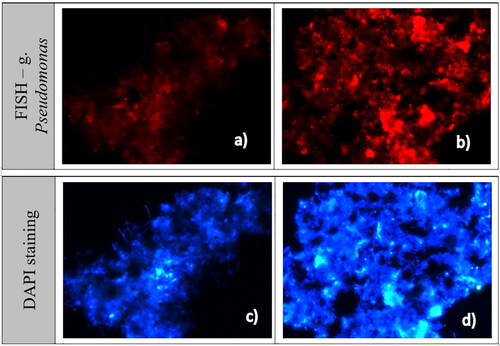
Data availability statement
The data that support the findings of this study are available from the corresponding author, Ivaylo Yotinov, upon reasonable request.


